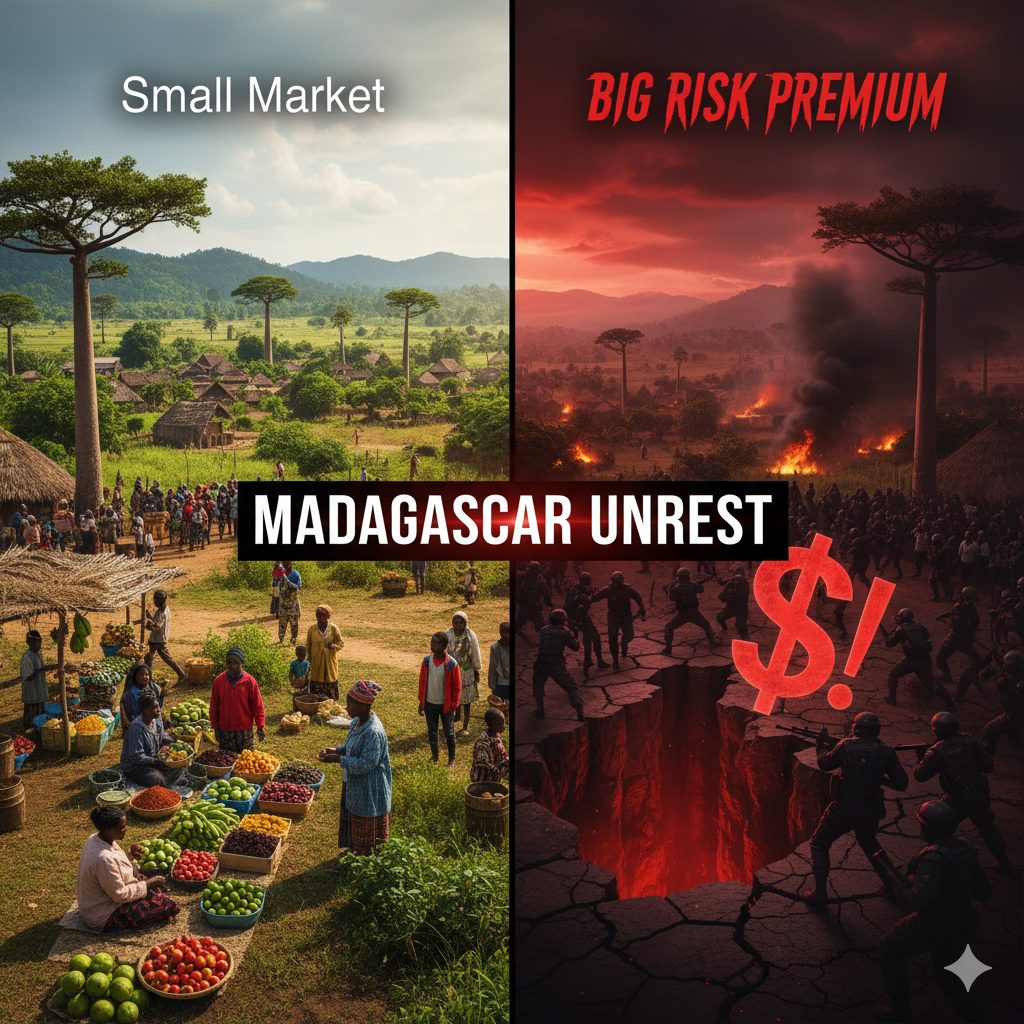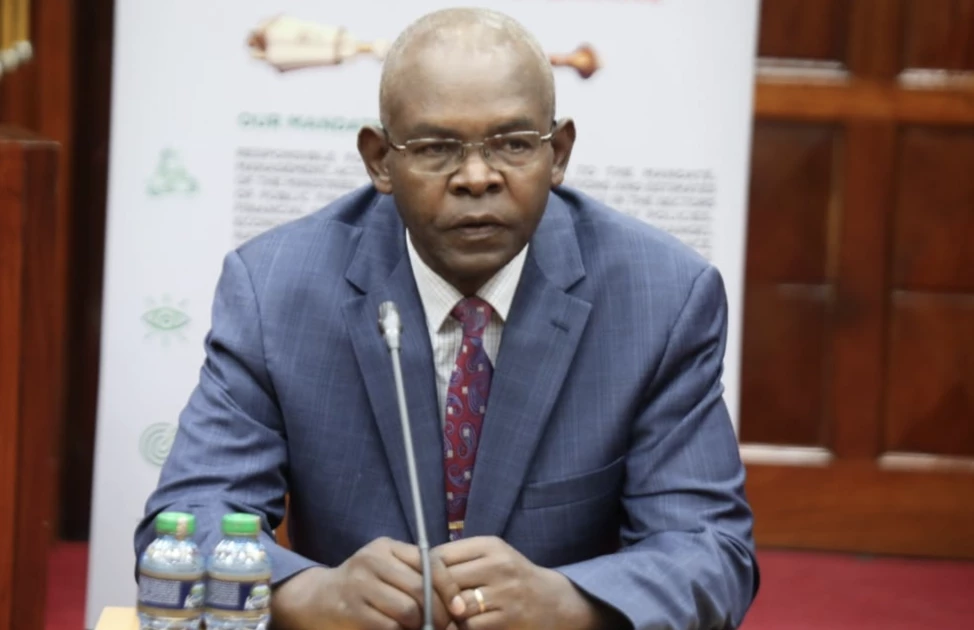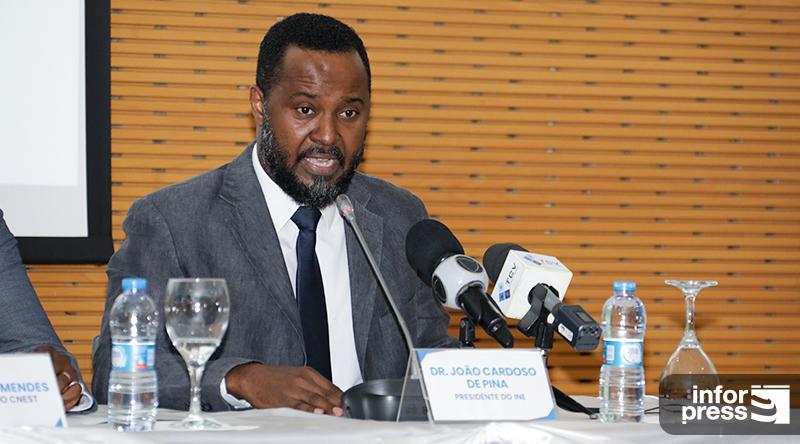Madagascar Unrest: Small Market, Big Risk Premium
Madagascar’s violent protests over power and water exposes fragile fundamentals. With GDP growth slowing to 3.2%, inflation at 8.6%, debt at 45% of GDP, and FX reserves covering just 3.6 months, unrest may widen spreads across frontier debt ETFs (EMB, FRNT) and hit mining giants RIO and S.TO.

Madagascar’s dusk-to-dawn curfew in Antananarivo after violent protests over power and water shortages underscores how infrastructure failure can rapidly turn into sovereign risk. For capital markets, the episode is less about local securities—since Madagascar lacks eurobonds—and more about how instability spills into regional pricing of frontier African assets.
The macro backdrop was already fragile. GDP growth averaged 4.1% between 2020–2024, with the IMF projecting a slowdown to 3.2% in 2025 if commodity exports underperform. Inflation is running at 8.6% YoY, driven by fuel and food imports. The fiscal deficit remains near 5% of GDP, largely covered by concessional financing, while external debt is ~45% of GDP. Debt service now consumes about 18% of government revenues, narrowing fiscal flexibility. FX reserves cover just 3.6 months of imports, exposing the Malagasy ariary (MGA) to depreciation pressure. Protests that disrupt logistics risk widening the current account deficit—already -4.9% of GDP in 2024—and intensifying inflation through imported price pass-through.
For investors, the market impact is indirect but meaningful. Frontier debt ETFs such as iShares JPMorgan USD Emerging Markets Bond ETF (EMB) and VanEck Vectors Frontier Markets Local Currency Bond ETF (FRNT) routinely widen spreads when smaller frontier economies face instability. Ghana’s eurobond curve (GHANGB) and Zambia (ZAMGB) have seen 30–50 bps spread moves triggered by unrelated regional unrest in the past. A protracted crisis in Madagascar could therefore feed into broader risk premia across Sub-Saharan frontier credits like Kenya (KENINT) and Nigeria (NGERIA).
Sector exposure adds another layer. Multinationals such as Rio Tinto (RIO, LSE/NYSE), through its QIT Madagascar Minerals operation, and Sherritt International (S, TSX) are exposed to ilmenite, nickel, and cobalt production. Together, nickel and cobalt exports account for nearly 25% of Madagascar’s goods exports. Any disruption risks marginal tightening in global battery metal supply chains. Tourism, contributing ~6% of GDP and generating ~$950 million in FX earnings in 2024, is also highly vulnerable under curfew and instability. Lower inflows would aggravate FX shortages, worsening pressure on the MGA.
The IMF program remains the policy anchor. Madagascar has a three-year Extended Credit Facility worth ~$320 million, with disbursements conditional on fiscal discipline and structural reforms. Delays in program reviews—possible under worsening unrest—could widen the fiscal gap and force the government into heavier domestic borrowing. That would push local T-bill yields (currently ~9–10%) higher, crowd out private-sector credit, and raise rollover risks. Rating agencies such as Fitch and Moody’s could tilt outlooks negative, raising the cost of any eventual international issuance.
The curfew may restore order temporarily, but it does not resolve the underlying drivers. Unless Madagascar mobilizes urgent investment into power and water systems, financed through concessional and blended structures, unrest risks becoming recurrent. For investors, the message is clear: even non-systemic markets can rattle regional benchmarks. Frontier risk pricing is increasingly sensitive not only to macro numbers but also to service delivery and governance shocks.





